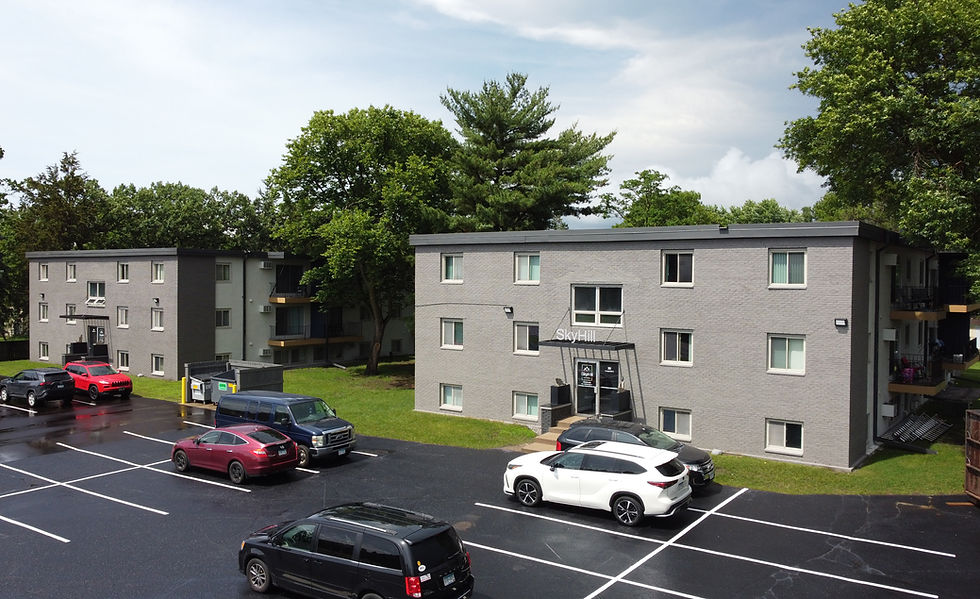Section 42 - How affordable housing gets built today
- Ridgeview Property Group

- May 27, 2024
- 3 min read
Updated: Jan 7

The development of towering, lackluster public housing projects has thankfully stopped. It turns out that multifamily development and design weren’t the government’s strong suits. Thankfully, lawmakers created programs like Section 42 to empower private developers to build affordable housing. Transitioning to privately built affordable housing has resulted in buildings that are designed better, managed more effectively, better located, and more cost-effective.
The development of towering, lackluster public housing projects has thankfully stopped. It turns out that multifamily development and design weren’t the government’s strong suits. Thankfully, lawmakers created programs like Section 42 to empower private developers to build affordable housing. Transitioning to privately built affordable housing has resulted in buildings that are designed better, managed more effectively, better located, and more cost-effective.
Section 42 Basics
Section 42, is also known as the Low-Income Housing Tax Credit (LIHTC) program. Developers apply to receive tax credits to reduce the down payment costs. In return for accepting Section 42 tax credits, the newly developed apartment complex can only accept tenants who fall below certain income levels; rents are also capped. These affordable restrictions run with land and typically last for 30 years.
Better Use Of Government Funds
Providing affordable housing is a core mission for the government, but its track record as a developer is poor. Ballooning construction costs and long completion timelines were common. When your construction project has the backing of the US government, there is no need to pinch pennies. On the other hand, private developers need to operate efficiently to make a profit. Cost overruns and long construction delays could spell disaster for their bottom line. It’s this dynamic that lawmakers recognized when they decided to put affordable housing development in the hands of private developers.
A Better Resident Experience
With Section 42, the developer invests their own equity into the deal and is also the long-term owner. This incentivizes them to build high-quality, fully amenitized apartment buildings. These properties typically have underground parking, fitness centers, community rooms, the whole nine yards. As the owner of the property, the developer is also incentivized to maintain it well and manage it professionally.
Government-built housing projects were often developed and managed without such thoughtfulness. These buildings commonly had small apartments, too few elevators, no balconies, and zero amenities. Their property management and maintenance were poor as well. The Pruitt-Igoe housing complex in St. Louis, MO, is an infamous example of poorly built and managed public housing. Built in 1954, the 33 buildings totaled 2,870 units. Badly designed and managed, the entire complex had to be demolished within 20 years.
Well Located Affordable Housing
We all want the residents of affordable housing to thrive, yet government-built housing was often built in C locations. Section 42, on the other hand, can be found in A, B, and C locations. Since they’ll be the long-term owners, developers of Section 42 projects choose their locations carefully. Their top priorities match those of the tenants: transit availability, low crime, parks, and nearby employment.
Final Thoughts
The shift from public housing to privately owned, income-restricted housing through programs like Section 42 represents a pivotal moment in the pursuit of affordable housing solutions. By empowering private developers with tax credits and incentives, lawmakers have not only optimized the use of government funds but also ensured the creation of higher-quality, better-designed housing options. As the long-term owners of the properties, private developers are motivated to invest in amenities, maintain properties diligently, and select better locations, to the benefit of the tenants.
-Ben Michel
Ben Michel is the founder of Ridgeview Property Group, an investment firm specializing in acquiring multifamily real estate. Register Here to be notified of available investment opportunities.




